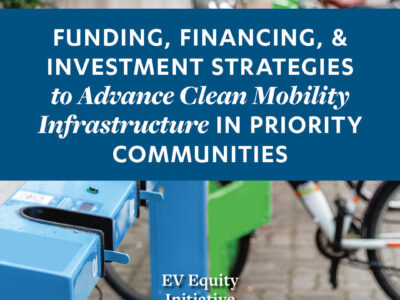Picture the Golden State in the year 2035: highways and byways humming with the quiet whir of electric vehicles (EVs), with nary a tailpipe emission in sight. It’s an ambitious vision, and one that California is steering towards with determination. But if we’re going to reach that horizon of 100 percent zero-emission vehicle (ZEV) sales, we’ve got a hefty challenge ahead of us—building out an electric vehicle charging network that can handle the load, especially for those Californians who need it most.
Breaking Down Barriers to EV Charging Access
Now, let’s talk nuts and bolts. California isn’t just dreaming big; it’s planning big. The state’s Energy Commission has crunched the numbers and they tell us we’re going to need a whopping 2.11 million public and shared private chargers to juice up about 15.2 million plug-in light-duty vehicles by 2035. As we stand in May 2024, we’re at about 105,000 publicly accessible chargers. You don’t need to be a math whiz to see that leaves us with a mountain to climb.
And here’s the kicker: the folks who could benefit the most from the clean mobility revolution—California’s priority populations—are also the ones facing the steepest climb. For many, home charging isn’t an option, making public charging infrastructure their lifeline to ZEVs. To make this work for everyone, we need to get proactive and ensure equitable access to this critical infrastructure.
The Financial Fuel for a Clean Mobility Future
So, where’s the money going to come from? That’s the billion-dollar question. City and county budget constraints mean we’ve got to get creative with investment and financing innovations. Local leaders have their work cut out for them. They’ve got to design programs that not only meet the mobility needs of their communities but also promote EV access across the board. And they’ve got to do it with funding sources that are fair, reliable, and sustainable, developed hand-in-hand with the communities they’re meant to serve.

EV Equity Initiative: Paving the Way with Innovative Proposals
In the thick of this challenge, the Center for Law, Energy & the Environment (CLEE) at UC Berkeley has teamed up with Prospect Silicon Valley (ProspectSV) to light the way forward. Together, they’ve gathered a brain trust—an advisory group of whizzes in climate and public finance, clean mobility, you name it—to cook up some innovative proposals for funding mobility infrastructure.
Their report is a treasure map of sorts, charting the path to city-scale mobility solutions. It’s not just a list of ideas; it’s a guidebook for local leaders to develop public EV charging infrastructure that’s tailored to the unique tapestry of their communities.
Local Tailoring of EV Charging Strategies
Every community has its own rhythm, its own needs. That’s why each strategy that’s come out of this think tank has to be custom-fitted. It’s not just about plugging in a financing model; it’s about weaving it into the community fabric. CLEE and ProspectSV are already on the move, working with partners to whip up pilot concepts for Bay Area municipalities, using their proposals as the blueprint.
By marrying equitable investment principles with cutting-edge financing and revenue models, we can do more than just build chargers. We can ensure that California’s leap into clean mobility is one that lifts all residents, giving everyone a shot at a cleaner, greener, and more connected future.
Key Takeaways for a Charged-Up California
- California’s ambitious ZEV goals demand a massive expansion of public and private EV charging infrastructure.
- Priority populations in California rely heavily on public charging, highlighting the need for equitable access.
- Financing the EV charging network expansion will require innovative investment strategies and community partnerships.
- The CLEE and ProspectSV report offers a roadmap for local leaders to develop tailored, equitable EV charging solutions.
- Collaborative efforts are underway to pilot these strategies in the Bay Area, setting the stage for statewide adoption.
As we hit the accelerator on California’s clean mobility transition, it’s not just about the destination—it’s about making sure everyone’s along for the ride. So let’s buckle in and power up for a journey to a more sustainable, inclusive future on the roads of California.
Did you miss our previous article…
https://pardonresearch.com/?p=20309
